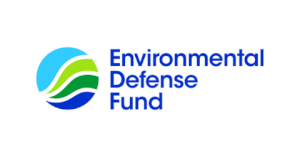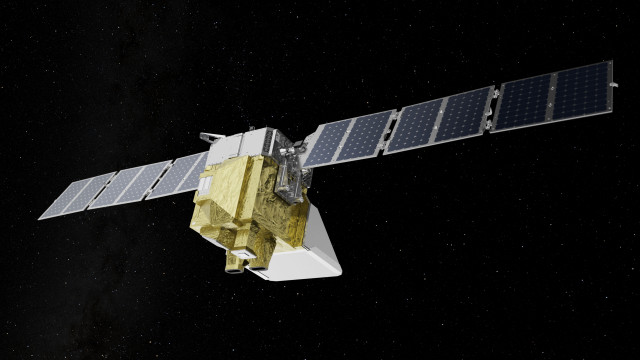MethaneSAT Now in Orbit after SpaceX Launches Groundbreaking Mission to Protect the Climate
First satellite developed by an environmental non-profit will see methane emissions others can’t, paving the way for heightened accountability and faster reductions
A digital media kit with photos, videos and graphics is available HERE.
Developed by a subsidiary of the global non-profit Environmental Defense Fund, MethaneSAT will see and quantify total methane emissions over wide areas that other satellites can’t and identify large emitters in places they aren’t looking. Data from MethaneSAT will enable both companies and regulators to track emissions, and give stakeholders - citizens, governments and investors - free, near-real time access to the data, and the unprecedented ability to compare the results against emission goals and obligations.
“Cutting methane pollution from fossil fuel operations, agriculture and other sectors is the single fastest way to slow the rate of warming as we continue to decarbonize our energy systems,” said EDF President Fred Krupp. “To do that requires comprehensive data on this pollution on a global scale. MethaneSAT will show us the full scope of the opportunity by tracking emissions to their source.”
Krupp announced MethaneSAT in a 2018 TED Talk as part of the TED Audacious Project. EDF has been a global leader in methane science and solutions for more than a decade, putting the problem on the map by organizing a pioneering series of 16 independent studies that showed methane emissions across the U.S. oil and gas supply chain were 60% higher than EPA estimates at the time. MethaneSAT is a direct outgrowth of these efforts.
“MethaneSAT’s superpower is the ability to precisely measure methane levels with high resolution over wide areas, including smaller, diffuse sources that account for most emissions in many regions,” said Steven Hamburg, EDF Chief Scientist and MethaneSAT project leader. “Knowing how much methane is coming from where and how the rates are changing is essential.”
Circling the Earth 15 times a day, MethaneSAT will measure changes in methane concentrations as small as three parts per billion. High sensitivity together with high resolution and a wide field of view will enable MethaneSAT to see the whole emissions picture (see more detail here).
These unique capabilities usher in a new era of transparency for the industry. Interactive emissions data will be available to anyone directly from www.MethaneSAT.org and on Google Earth Engine, a premier geospatial data platform used by over 100000 experts and analysts.
MethaneSAT was made possible entirely by the support of EDF donors and our partnership with the Government of New Zealand. Among the largest contributors to MethaneSAT are the Bezos Earth Fund, Arnold Ventures, the Robertson Foundation and the TED Audacious Project.
“Methane emissions have been overlooked and hard to detect for far too long,” said Dr. Kelly Levin, Chief of Science, Data and Systems Change at the Bezos Earth Fund. “MethaneSAT changes the equation, putting science and data front and center. From the sky, it can see what others can’t, helping good actors and holding bad actors accountable. The Bezos Earth Fund is proud to be a partner in this adventure.”
In December, EDF joined with Bloomberg Philanthropies, the International Energy Agency, RMI and the UN Environment Programme’s International Methane Emission Observatory on a new, first-of-its-kind initiative to hold companies and governments more accountable for their methane management.
“You can’t manage what you can’t measure, and that’s certainly true when it comes to cutting methane, one of the biggest drivers of climate change,” said Michael R. Bloomberg, UN Secretary-General's Special Envoy on Climate Ambition and Solutions and Founder of Bloomberg LP and Bloomberg Philanthropies. “Data from this satellite will help us to better measure methane emissions and target their sources, bringing more transparency to the problem, giving companies and investors the information they need to take action, and empowering the public to hold people accountable.”
In addition to identifying emission sources and rates for a given region, MethaneSAT will make it possible to compare emission loss rates across major oil and gas regions worldwide and performance over time. Analytics developed specially for the mission will trace those emissions back to their sources within those target regions.
“We have consistently seen the power of strong data to win robust regulatory safeguards and better operating practices in the industry. Good science lays the groundwork for better decisions,” said Mark Brownstein, EDF Senior Vice President, Energy Transition.
In January the Biden Administration proposed rules for a fee on excess methane emissions, which will require accurate emissions reporting. European legislation agreed to in November charts a pathway toward requiring empirical emissions data from gas importers, while Japan and Korea - two of the largest LNG buyers - have launched plans to begin requiring emissions data from suppliers.
As methane standards are incorporated into national policy and trade agreements, MethaneSAT will help ensure targets are being met, and make clear where claimed reductions fall short.
Over 150 countries have signed the Global Methane Pledge to cut their collective methane emissions at least 30 percent from 2020 levels by 2030. At COP 28, over 50 companies announced the Oil & Gas Decarbonization Charter, committing to virtually eliminate methane emissions and routine flaring.
In addition to parent organization EDF, MethaneSAT partners include Harvard University’s School of Engineering and Applied Sciences, the Smithsonian Astrophysical Observatory, and the New Zealand Space Agency. The combined mission team has over 70 experts worldwide with experience in spaceflight, remote sensing, and data analytics.
The satellite was built in Colorado by the Space & Mission Systems unit of BAE Systems, Inc. (formerly Ball Aerospace) and Blue Canyon Technologies.
MethaneSAT, LLC is a subsidiary of Environmental Defense Fund, Incorporated, a leading international nonprofit organization. EDF links science, economics, law, and innovative private-sector partnerships to create transformational solutions to the most serious environmental problems. Follow us on Twitter at @MethaneSAT, or connect with us at www.MethaneSat.org. Copyright © 2024 MethaneSAT, LLC. All Rights Reserved.
One of the world's leading international nonprofit organizations, Environmental Defense Fund (edf.org) creates transformational solutions to the most serious environmental problems. To do so, EDF links science, economics, law, and innovative private-sector partnerships. With more than 3 million members and offices in the United States, China, Mexico, Indonesia and the European Union, EDF’s scientists, economists, attorneys and policy experts are working in 28 countries to turn our solutions into action. Connect with us on Twitter @EnvDefenseFund.
View source version on businesswire.com: https://www.businesswire.com/news/home/20240304322966/en/
Website: https://www.edf.org/
Contact
Environmental Defense Fund
Lexie Michel
Sun Public Relations
952-457-1418
lexie@sunpr.com
Lauren Whittenberg
512-784-2161
lwhittenberg@edf.org
This news is a press release provided by Environmental Defense Fund.




